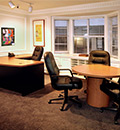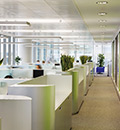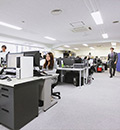Museum of Fine Arts, Cetinje
The Museum of Fine Arts is one the oldest and most respected institutions in Montenegro. Its mission is to study the development of
fine arts; to collect, keep and exhibit works of artistic value; and, by an adequate selection of works, to offer the most comprehensive
overview of the most significant achievements in fine arts. It has a permanent display of over 1000 artworks dating back to the 7th
century, from Montenegro and the rest of the world and, the best part, it’s free to the public.
National Museum of Montenegro, Cetinje
The National Museum of Montenegro in Cetinje is a cultural institution made up of different museums and galleries, all of which are housed
in buildings of immense historic and cultural importance. Included in this complex are the Museum of History and the Art Museum.
City Museum of Podgorica, Podgorica
The City Museum of Podgorica has a rich offering of artefacts and information, including historic archives, photographs, folk costumes,
ornaments, weapons, daily objects, religious icons and other sacred artefacts. It is a fantastic way to learn about the most important
periods, events and personalities in Podgorica history.
Maritime Museum, Kotor
The Bay of Kotor is a museum in itself, but the Maritime Museum is a worthy addition. Originally a Baroque palace belonging to a local noble
family, today it is an amazing recall to the lives of Boka Bay seamen, starting in the 16th century and running all the way up to the present day.
Naval Heritage Museum, Tivat
The Naval Heritage Collection is housed in a beautifully restored building and showcases over 300 artefacts, from Austro-Hungarian ship
equipment and industrial machines to the diaries of Montenegro’s Princess Ksenija. The main exhibits, however, are too big for the museum:
the two Yugoslav navy submarines dry-docked outside.
Our Lady of the Rocks Catholic Museum, Perast
Our Lady of the Rocks is one of the two islands in Perast (the other being Sveti Dorde Island). It is an artificial island, created by a
bulwark of rocks and by old, sunken ships that have been seized and loaded with rocks. The Roman Catholic Church is the largest building
on the little island and has a museum attached.
Polimlje Museum, Berane
The Museum of Polimlje in Berane was established in 1953 as a regional museum complex for the territory of Gornje Polimlje. The museum
holds a number of impressive collections, such as archaeological, ethnographic, artistic, numismatic, heraldic, natural, and photographic.
According to the current records, these collections hold more than 4500 items, while its expert library division holds some 3000 books.
Budva Museum, Budva
The Gallery, Library and Museum of Budva represent a treasure of cultural history. The exhibits display artifacts from the various Illyrian,
Greek, Roman, Byzantine and Slavic peoples who have settled throughout the centuries in Budva.
Homeland Museum, Bar
The Homeland Museum in Bar is housed in King Nikola’s Palace, built in 1885. It was used as a summer residence for the dynasty and now
displays items from various historic periods: prehistory, ancient times, the Middle Ages, the period of Turkish dominance, and the reign
of King Nikola.
Ulcinj Cultural Center, Ulcinj
The Ulcinj Cultural Center is a group of three buildings, including a mosque and the Balsica Tower, which has been turned into an art
gallery. The collection in the museum features a wide range of artefacts from the various groups who have settled in Ulcinj, from
prehistoric times through Greek, Roman and Turkish rule.







